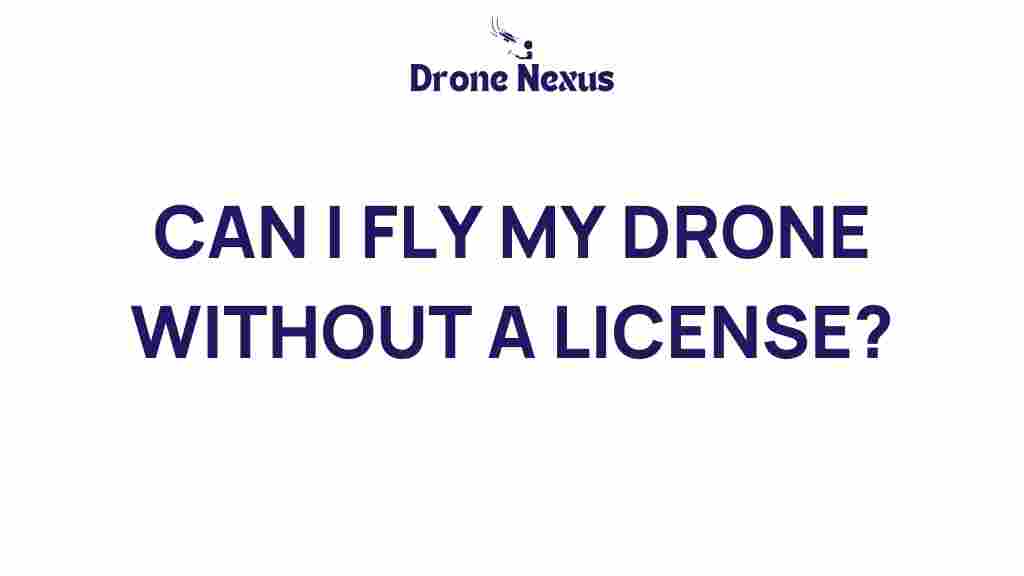Can You Fly a Drone Without a License? Understanding Drone Regulations
As drone technology continues to advance and become more accessible, many enthusiasts are eager to take to the skies. However, a common question arises: Can you fly a drone without a license? Understanding drone regulations is crucial for anyone looking to operate these flying machines legally and safely. This article will unpack the rules surrounding drone operation, the types of licenses available, and what you need to know before launching your drone.
Understanding Drone Regulations
Drone regulations vary significantly across different countries and regions. In the United States, the Federal Aviation Administration (FAA) governs the use of drones and has established clear rules that dictate when a license is necessary. Here’s a breakdown of the primary regulations you should be aware of:
- Recreational vs. Commercial Use: The regulations differ based on whether you are using a drone for recreational purposes or commercial operations.
- Weight Limit: Drones weighing under 0.55 pounds (250 grams) are generally exempt from licensing requirements in many jurisdictions. However, this does not apply everywhere.
- Airspace Restrictions: Pilots must adhere to restrictions regarding where drones can fly, including no-fly zones near airports and populated areas.
- Altitude Limits: The FAA restricts drone flights to a maximum altitude of 400 feet above ground level.
When Is a License Required?
To determine whether you need a license to fly your drone, consider the following scenarios:
1. Recreational Flying
If you are flying your drone purely for recreational purposes and it weighs less than 0.55 pounds, you typically do not need a license. However, you must still follow the FAA’s Community-Based Guidelines and register your drone if it weighs more than 0.55 pounds.
2. Commercial Use
If you plan to use your drone for commercial purposes, such as aerial photography, inspections, or delivery services, you must obtain a Remote Pilot Certificate under Part 107 of the FAA regulations. This involves:
- Passing the FAA’s Aeronautical Knowledge Test.
- Being at least 16 years old.
- Being able to read, write, speak, and understand English.
- Undergoing a TSA security background check.
How to Obtain a Drone License
If you’ve determined that you need a license to operate your drone commercially, here’s a step-by-step process to obtain your Remote Pilot Certificate:
Step 1: Understand the Requirements
Before taking the test, familiarize yourself with the rules and regulations of drone flying. The FAA provides resources that can help you prepare, including the Part 107 Small UAS Study Guide.
Step 2: Study for the Test
Consider enrolling in a course or using online resources to study topics covered in the test, such as:
- Airspace classifications
- Weather effects on drone flight
- Emergency procedures
- Loading and performance
Step 3: Schedule Your Test
Once you feel prepared, schedule your FAA knowledge test at an approved testing center. The test consists of 60 multiple-choice questions, and you must score at least 70% to pass.
Step 4: Apply for Your Certificate
After passing the test, submit your application through the FAA’s Integrated Airman Certification and Rating Application (IACRA) system to receive your Remote Pilot Certificate.
Common Misconceptions About Drone Regulations
There are several misconceptions regarding drone regulations that can lead to confusion. Here are a few:
- Myth: I can fly my drone anywhere.
Fact: There are strict no-fly zones, especially near airports, military bases, and densely populated areas. - Myth: All drones require registration.
Fact: Only drones weighing over 0.55 pounds need to be registered with the FAA. - Myth: I can fly my drone at night.
Fact: Flying at night is generally prohibited unless you have specific waivers and lighting on the drone.
Troubleshooting Common Issues
When flying drones, you may encounter various issues. Here are some common troubleshooting tips:
1. Loss of Signal
If you lose signal with your drone, it may automatically return to its takeoff point. Make sure to:
- Keep the drone within line of sight.
- Check your signal strength before flying.
- Choose an open area away from tall buildings and trees.
2. Battery Issues
Drone flights are limited by battery life. To avoid issues:
- Always check battery levels before flying.
- Bring extra batteries for extended sessions.
- Charge batteries fully before use.
3. Weather Conditions
Weather can greatly affect drone performance. Avoid flying in:
- High winds (above 15 mph)
- Heavy rain or snow
- Fog that reduces visibility
Conclusion
In summary, flying a drone without a license is possible under certain conditions, particularly for recreational use with lightweight drones. However, understanding drone regulations is vital for safe and legal operation. If you plan to fly commercially or if your drone exceeds specific weight limits, obtaining a Remote Pilot Certificate is necessary. Always stay updated on local regulations and maintain safe flying practices to ensure enjoyable experiences with your drone.
For more information on drone regulations, refer to the FAA’s official guidelines. Happy flying!
This article is in the category Safety and created by DroneNexus Team
